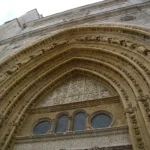Florence, Italy, stands as a beacon of Renaissance art and culture, and nothing captures this essence more than the Uffizi Gallery. This magnificent museum houses an unparalleled collection of masterpieces that draw visitors from around the globe. Positioned in the heart of Florence, the Uffizi Gallery’s rich history, stunning architecture, and unrivaled artworks offer an immersive dive into Italian art’s evolution. Whether arriving from Florence’s central station or the nearby airport, visitors find themselves stepping into a realm where craftsmanship, design, and artistic genius converge. For those seeking nearby accommodation, options abound within walking distance, providing easy access to Florence’s historic centre and culinary delights like traditional Tuscan trattorias and bustling local markets.
Table of Contents
Tracing the Uffizi Gallery’s Artistic and Architectural Journey
The Uffizi Gallery began as offices-‘uffizi’ in Italian-commissioned by Cosimo I de’ Medici in the 16th century. Architect Giorgio Vasari designed the U-shaped building to serve administrative functions for the Florentine magistrates, but its grandeur soon called for a collection worthy of its halls. Over centuries, the gallery transitioned into a public museum, becoming one of the oldest and most significant art museums worldwide.
The building itself is a masterpiece of Mannerist architecture, showcasing precise symmetry and proportion. Its loggias frame the Arno River and the Ponte Vecchio, embodying a harmonious relationship between urban morphology and aesthetic experience. Walking through the Uffizi’s corridors, visitors witness how architecture enhances the display of art through carefully designed lighting and spatial flow, making the gallery a prime example of design evolution in museum spaces.
Getting Here: Navigating To The Uffizi Gallery
Located along the Via della Ninna, just steps from Piazza della Signoria, the Uffizi is easily reachable by multiple transportation modes:
- From Florence Santa Maria Novella train station, it’s a 15-minute walk following signs through Piazza della Repubblica and along Via dei Calzaiuoli.
- Taxi stands and rideshare options provide quick, direct routes from both the airport and the train station, ideal for travelers with luggage or in a hurry.
- Public buses also connect various city points, with stops near the Uffizi-look for lines 6 and 14, among others.
Adventurous visitors might enjoy a leisurely walk along the Arno River, crossing the historic Ponte Vecchio before arriving at the museum’s entrance-a journey that combines architectural sights and urban morphology.
Art Display and Visitor Flow: Booking Tours and Reservations
The Uffizi Gallery receives thousands daily, making reservations essential. Tickets should be booked well in advance through the official website to avoid long queues and secure entry times. Guided tours enhance the experience, revealing stories behind the artworks, artistic techniques, and the Medici family’s patronage that shaped Florence’s cultural legacy.
Self-guided visits remain popular, with audio guides available in multiple languages. However, to appreciate the layered narratives of the Renaissance masterpieces, a knowledgeable guide’s insight is invaluable. Reservations can be made directly on the museum’s homepage, streamlining the visit and ensuring access to special exhibitions and restored sections.
Best Days and Times to Visit
Visiting early weekday mornings or late afternoons on Wednesdays and Thursdays often means fewer crowds and a more contemplative experience. The museum is typically busiest during weekends and holiday seasons, particularly in summer. Consider avoiding the first Sunday of each month, when the museum is free and overwhelmingly crowded.
Curated Stories Within the Walls: Highlights and Quirks
The Uffizi’s collection reads like a visual history of Renaissance art, featuring iconic works by Botticelli, Michelangelo, Leonardo da Vinci, and Caravaggio. Notable paintings such as Botticelli’s “Birth of Venus” and “Primavera” grace the walls with their delicate balance of mythological symbolism and naturalistic detail.
Few realize that the gallery’s architecture cleverly uses natural light to spotlight art throughout the day. In some rooms, the angle of sunlight illuminates details invisible under artificial light, underscoring how material craftsmanship and design converge to enhance viewer perception.
One captivating anecdote involves the Vasari Corridor-a secret passageway connecting the Uffizi with the Pitti Palace across the Arno. Built for the Medici family’s private use, it allowed discreet travel and showcases Florence’s emphasis on integrating fortifications and exhibition spaces.
Local Flavors and Accommodation Near Uffizi Gallery
After absorbing artistic brilliance, visitors often seek Tuscan flavors nearby. The area around the Uffizi hosts several trattorias serving ribollita, pappa al pomodoro, and Florentine steak, all reflecting the region’s culinary heritage. Artisan gelato shops provide a refreshing break, with gelato crafted using traditional techniques and local ingredients.
Accommodation ranges from charming guesthouses housed in restored Renaissance buildings to modern apartments that echo Florence’s architectural heritage. Staying close to the Uffizi allows easy exploration of not only the gallery but also the surrounding historic centre, including landmarks like the Duomo and Palazzo Vecchio.
Official Source and Further Information
For detailed ticketing, opening hours, and special exhibitions, the Uffizi Gallery’s official website offers comprehensive resources in Italian and English. Planning ahead via this portal ensures access to the latest updates and reservation options.
Visit Uffizi Gallery Official Website

- Galería Uffizi, Florencia, Italia, 2022-09-18, DD 59-61 HDR by Diego Delso on Wikimedia Commons – cc by-sa 4.0
